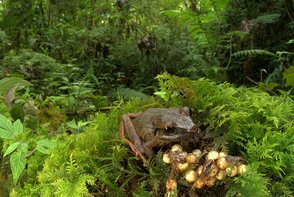 A new lab contribution is available as Early View article today in Ecology & Evolution. The study compares variation in maximum and minimum critical temperatures of more than 20 species of craugastorid frogs in the Amazonian lowland rainforest and contiguous Andean slopes. In this region craugastorid frogs such as the Pristimantis danae female guarding over her hatchlings of the photo have diversified into what is one of the largest vertebrate radiation. As suggested by previous findings, lowland frogs seem to be at higher risk from climate warming than highland frogs, because lowland frogs are already living at temperatures that are fairly close to the maximum critical temperatures that they could tolerate. This expanded study incorporates the frog's evolutionary history and data on tolerance to cold, and tested whether tolerance to heat and cold exhibit different rates of change, given that critical thermal limits (and their plasticity) may have evolved differently in response to different temperature constraints along the gradient. Our findings indicate great variation in thermal limits, and relatively faster rates of change for tolerance to cold than tolerance to heat. Remarkably, some high-elevation species such as Bryophryne cophites tolerated temperatures as low as 0.4 degrees Celsius. 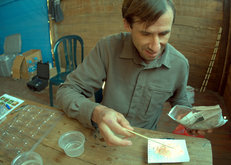 The study was led by our collaborator Rudolf von May, postdoctoral researcher in the Department of Ecology and Evolutionary Biology at the Univerisity of Michigan, shown here preparing biophysical models to measure temperatures that frogs experience in their microhabitats in the cloud forests and grasslands of Wayqecha Biological Station. See our previous blog post about substantial recent warming in these environments. I would like to share some online tools that I find very useful when determining whether a species might be new, and during the process of describing new species. This is geared towards amphibians, but many of these resources apply more broadly to other taxa.
Is it new? Tools to compare materials and information AmphibiaWeb (www.amphibiaweb.org): this comprehensive portal provides information on natural history, population declines and conservation, current taxonomy and amphibian news. Species accounts include links to Amphibian Species of World, Genbank, VertNet and FonoZoo (see below). Amphibian Species of the World (http://research.amnh.org/vz/herpetology/amphibia): Darrel Frost's taxonomic catalog of all amphibian species, this is the best resource to retrieve past taxonomic changes, and to check current taxonomy. VertNet (www.vertnet.org): this searchable database aggregates specimen data from hundreds of musem collections across the world. It is an extremely useful tool to discover and locate comparative material and associated data. Biodiversity Heritage Library (www.biodiversitylibrary.org): this website stores nearly 50 million pages of biodiversity literature, including scanned copies (which can be downloaded as PDFs) of species descriptions from the XIX and XX centuries. What should I sequence? PhyLoTa (http://sirloinpope.com/): This website returns information about the potential phylogenetic data sets (clusters, or sets of homologous sequences) that can be constructed from the database for taxa of interest. Very useful to choose genes for sequencing by maximizing species sampling. Describing the species: digital repositories Zoobank (http://zoobank.org): this is the official registry of zoological nomenclature, and the place to register new nomenclatural acts and papers describing the new taxa, especially useful for journals that do not include nomenclature registration as part of their publication process. Genbank (https://www.ncbi.nlm.nih.gov/genbank): The NIH genetic sequence database, an annotated collection of all publicly available DNA sequences, including tools to upload and submit newly generated sequences to assign accession numbers for each sequence. Calphotos (http://calphotos.berkeley.edu): database storing biodiversity and natural history photographs. When uploading photographs of a recently described species, you should email Calphotos first with a copy of the publication to make sure Calphotos will incorporate the new species in their database. Fonoteca (http://www.fonozoo.com): largest database of anuran calls (>1000 species), including form to submit new recording and have them indexed for publication. Our lab had a strong presence at the Undergraduate Symposium today with three posters featuring ongoing herpetological research, and first place award for Chris (Rookies category) -- congratulations Chris! Nate (left) presented about the strength of chytrid fungus inhibition by symbiotic skin bacteria of several species of montane tropical frogs in a region where chytrid has caused the collapse of amphibian communities. Joseph (center) worked on identifying each bacterial strain, and additional strains not assayed for inhibitory capacities, through sequencing of 16S rRNA gene. Chris (right) reported on the rediscovery of an enigmatic colubrid snake, appropriately named Erythrolamprus problematicus, and previously known from a single specimen, which does not appear to fit into any previously described genera. Preliminary analyses seem to suggest that this snake is basal to all other Xenodontinae genera.
|
Archives
June 2024
CATENAZZI LABNews from the lab Categories |
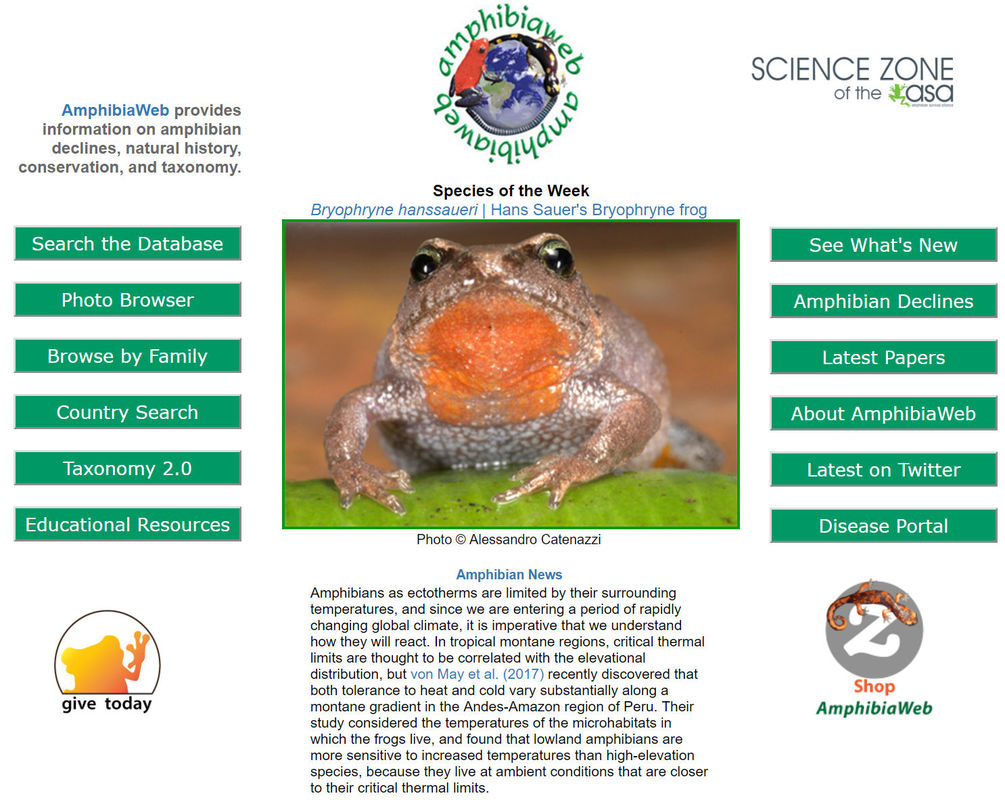
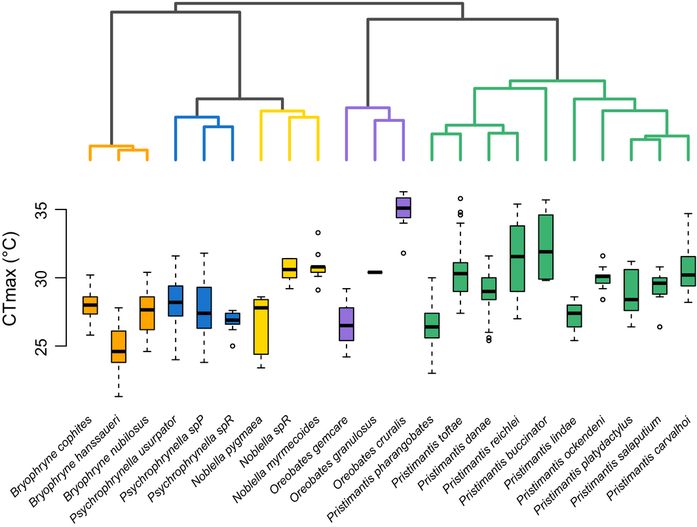
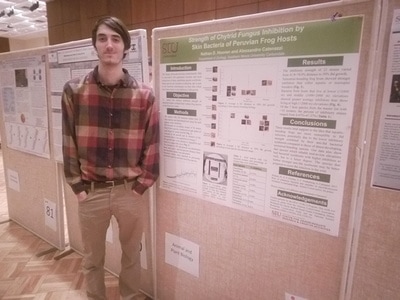
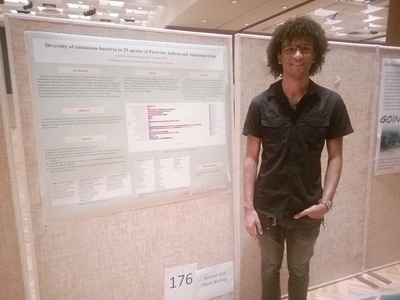
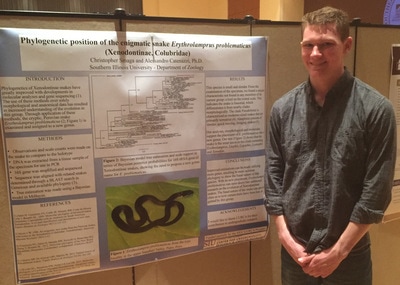
 RSS Feed
RSS Feed